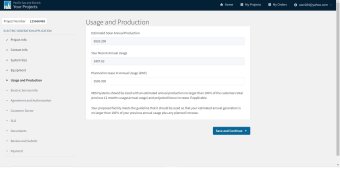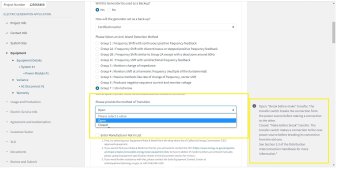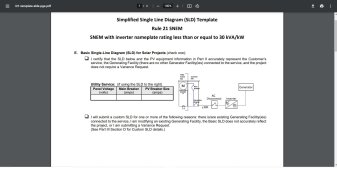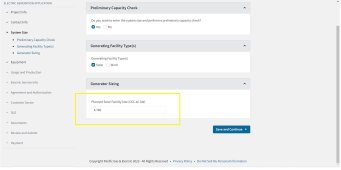Kuma
New Member
Applying for PGE NEM for a new residential solar system. I would like to make the system about 2.5kw larger than current annual usage. When I get to the "Usage and Production" area it displays "Estimated Solar Annual Production and "Your Recent Annual Usage (kWh)". The delta is 2.3 kw. The following message/warning is displayed:
"NEM Systems should be sized with an estimated annual production no larger than 100% of the customers total previous 12 months usage(annual usage) and projected future increase if applicable.
Your proposed facility does not meet the guideline that it should be sized so that your estimated annual generation is no larger than 100% of your previous annual usage plus any planned increase."
In the "Planned Increase In Annual Usage (kWh)" area, just above the warning message, I put 2.3kw. But, their is no area to explain why the increased production is warranted and the above warning message remains.
Is this going to cause the submission to get rejected? Any ideas or work arounds?
In the next section their is this:
"Will an electric vehicle recharging facility be included as part of the load at this location?" I dont plan on an EV or installing a charging cable but if its necessary to address the above issues so be it. This is in another section of the form and does not seem to be related to increased solar production. But, it could be.
Also, under "New Equipment, "Please provide the method of Transition". The choices are "closed or "open". The inverter will be a SMA Sunny Boy String Inverter. Is it closed or open transition?
Its Saturday night and I can not contact SMA and Im trying to submit the application this weekend to allow time for review(s) and possible rejection(s).
Thank you!
"NEM Systems should be sized with an estimated annual production no larger than 100% of the customers total previous 12 months usage(annual usage) and projected future increase if applicable.
Your proposed facility does not meet the guideline that it should be sized so that your estimated annual generation is no larger than 100% of your previous annual usage plus any planned increase."
In the "Planned Increase In Annual Usage (kWh)" area, just above the warning message, I put 2.3kw. But, their is no area to explain why the increased production is warranted and the above warning message remains.
Is this going to cause the submission to get rejected? Any ideas or work arounds?
In the next section their is this:
"Will an electric vehicle recharging facility be included as part of the load at this location?" I dont plan on an EV or installing a charging cable but if its necessary to address the above issues so be it. This is in another section of the form and does not seem to be related to increased solar production. But, it could be.
Also, under "New Equipment, "Please provide the method of Transition". The choices are "closed or "open". The inverter will be a SMA Sunny Boy String Inverter. Is it closed or open transition?
Its Saturday night and I can not contact SMA and Im trying to submit the application this weekend to allow time for review(s) and possible rejection(s).
Thank you!






